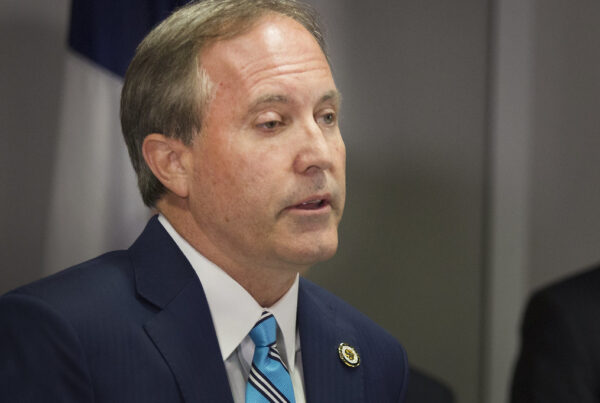A map of the current state of wildfires across Texas was showing eight active fires as of Thursday afternoon.
Two firefighters suffered burns and were hospitalized after responding to the Snowhill Fire in San Jacinto County on Wednesday. By late that night, the fire had burned 215 acres and was almost contained, with crew continuing to monitor the area overnight.
Erin O’Connor, public information officer for the Texas A&M Forest Service, joined the Standard with an update as extreme heat and the threat of wildfires persist across most of the state.
This transcript has been edited lightly for clarity:
Texas Standard: Where does Texas stand today with the overall level of of fire preparedness?
Erin O’Connor: We are prepared. We’ve brought in additional resources to help us manage this increased level of activity that we’ve been seeing in the past few weeks. We have aircraft; we have personnel, equipment, engines. We are ready to respond.
Right now, what seems to be the worst wildfire that firefighters are battling?
We currently have eight active wildfires. There are a couple: the Snowhill Fire over in San Jacinto County, as well as the Powder Keg Pine Fire that’s burning in Bastrop County. Those are two that we’re keeping our eye on just due to the location, the conditions, the behavior that we were seeing while those were burning.
Today, we’re also expecting to have high fire danger again. So as the day progresses and our temperatures rise and maybe it gets a little drier in the afternoon, all of our fires, but especially those ones we’ll be watching to see and make sure that the fire activity doesn’t intensify and that we don’t have any issues with containment.
As I understand it, both the Snowhill Fire and the Powder Keg Pine Fire in Bastrop County are coming close to 100% containment. Is that right?
That’s right, yes. But what we’re seeing right now with our fires is that because of the drought conditions and how dry our vegetation is, the fires are holding heat a lot longer, so it’s taking more time for us to fully contain those. And there’s always a chance of it rekindling.
» GET MORE NEWS FROM AROUND THE STATE: Sign up for our weekly ‘Talk of Texas’ newsletter
Where across the state are we seeing the biggest threats today? As I was looking at that map, I was struck by how many dots indicating current or ongoing fires were in Central and East Texas.
So we’re seeing a pretty large portion of the state, very broad regions that are included in the high fire danger area. So we have areas that are along the I-35 corridor extending west to like Kerrville, Brady, Brownwood, Eastland kind of areas. But then we also have a risk in areas east of I-40, south of I-20. So those are some very broad regions of the state that we’re expecting to see fire activity.
Are there any current evacuation notices for any Texans?
At this time there are not. We did have a couple last night with some of our fires yesterday with some of the fires, but those have all been lifted at this point.
If you live in those areas where there’s the highest risk of wildfire danger, what steps should you be taking right now?
So there’s there’s two things we recommend for residents that live in high fire danger areas. One, to be prepared ahead of time. And there are things that you can do to make your home safer. Also, preparing for evacuation. We never want to think about that, but it’s always better to be prepared ahead of time in the event that a wildfire does start in your home and you’re asked to leave. Having that go kit, having things ready to go at a moment’s notice.
And then we also encourage folks, if they’re living in areas that have these dry conditions or you have high fire danger, to just be very cautious. Most of our fires are human caused, and that means they’re totally preventable. So if people just think about the conditions before they do some of their outdoor activities – it’s always the little things we don’t think about, right? We’re going to go fix our fence with a welder or do some hay baling or mow the lawn, and those activities can spark a wildfire, even though we don’t mean for it to.













